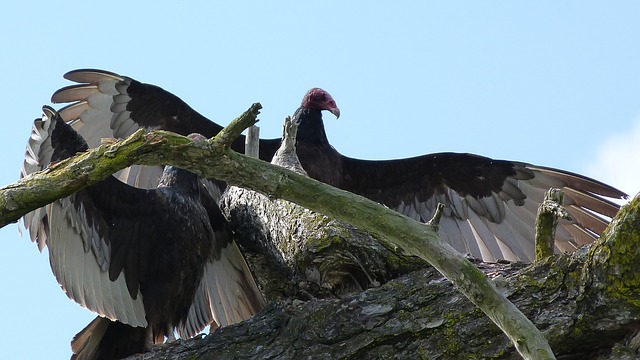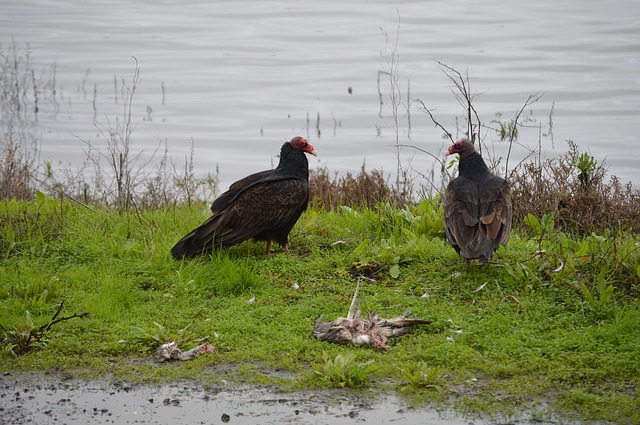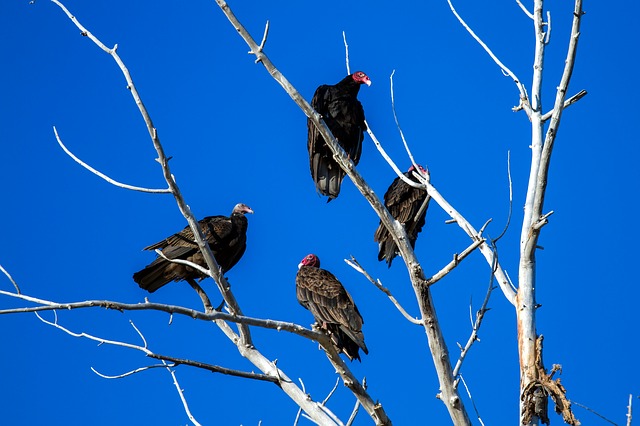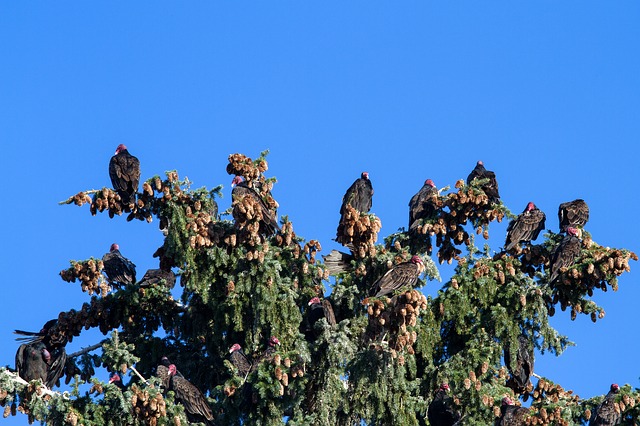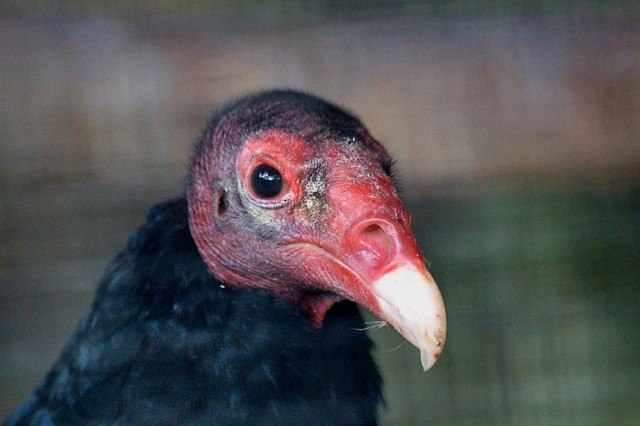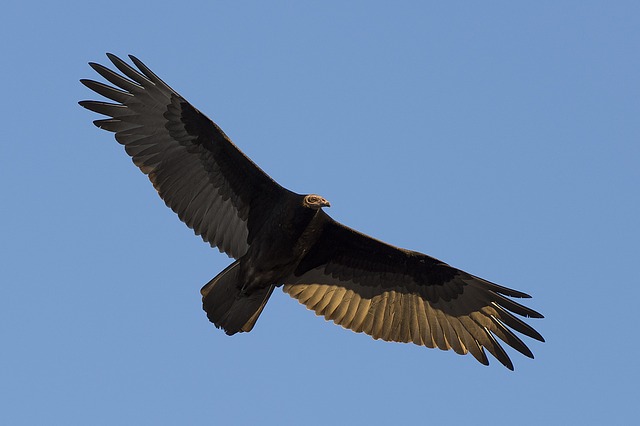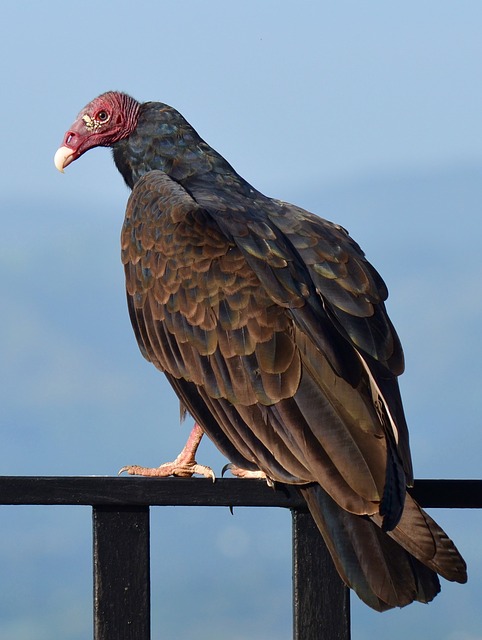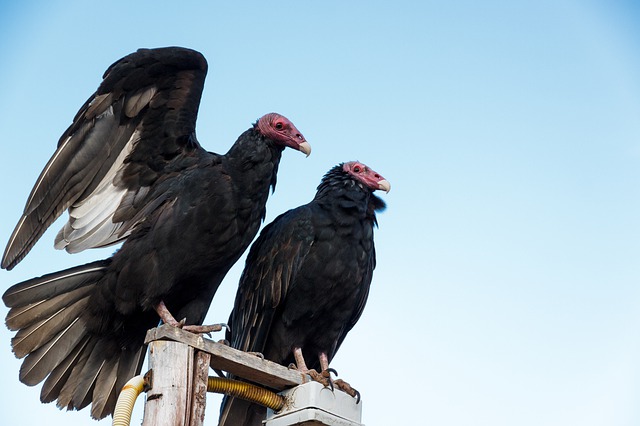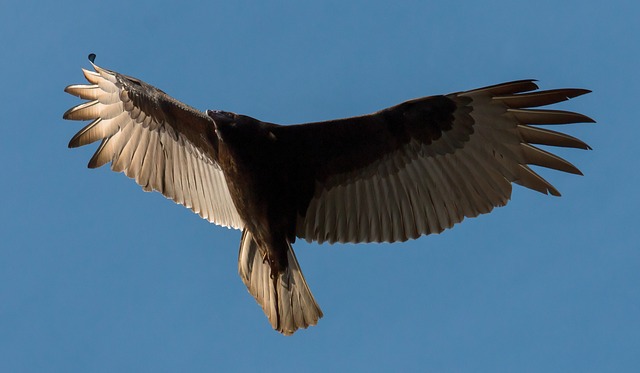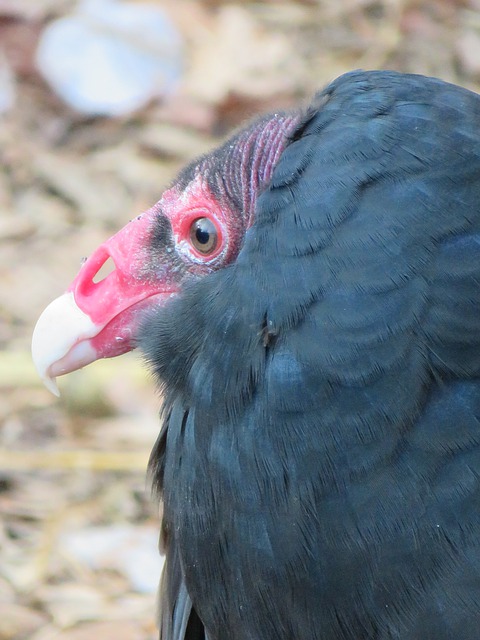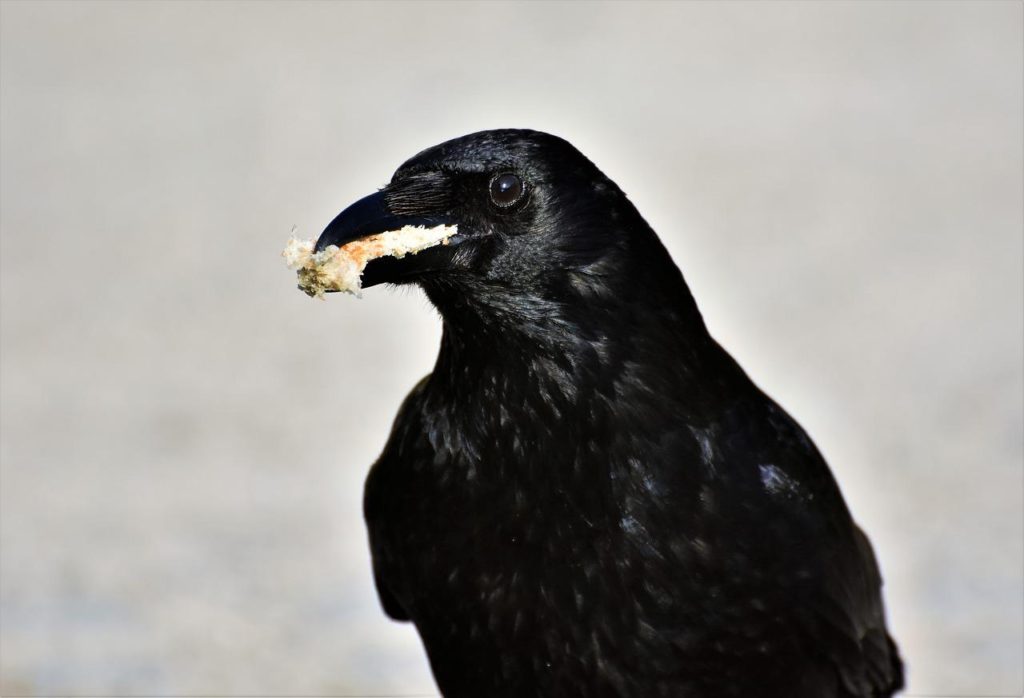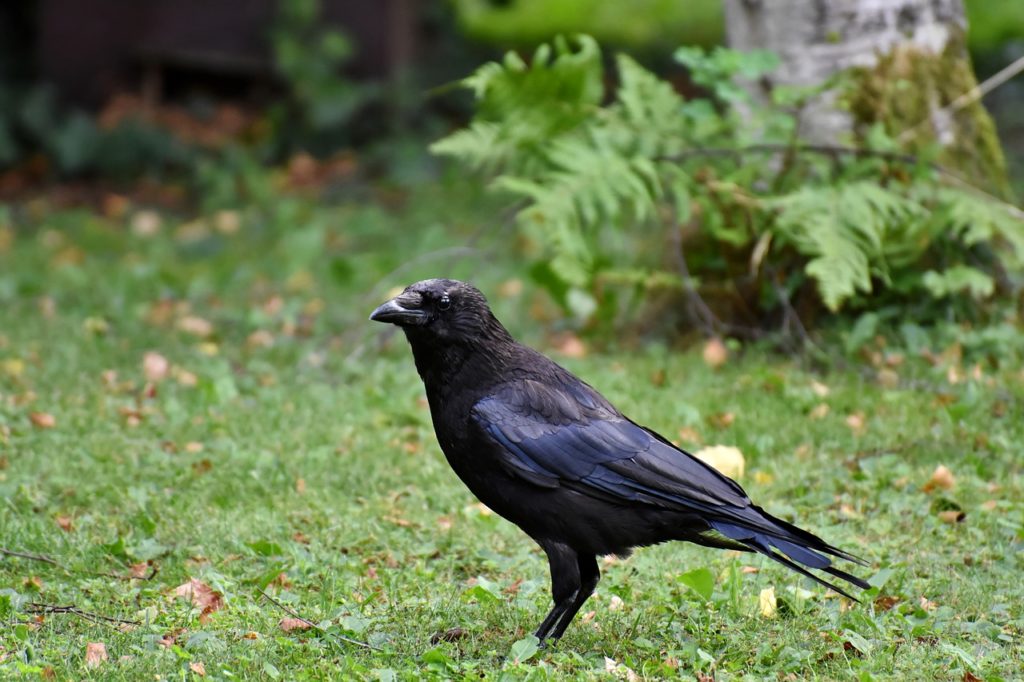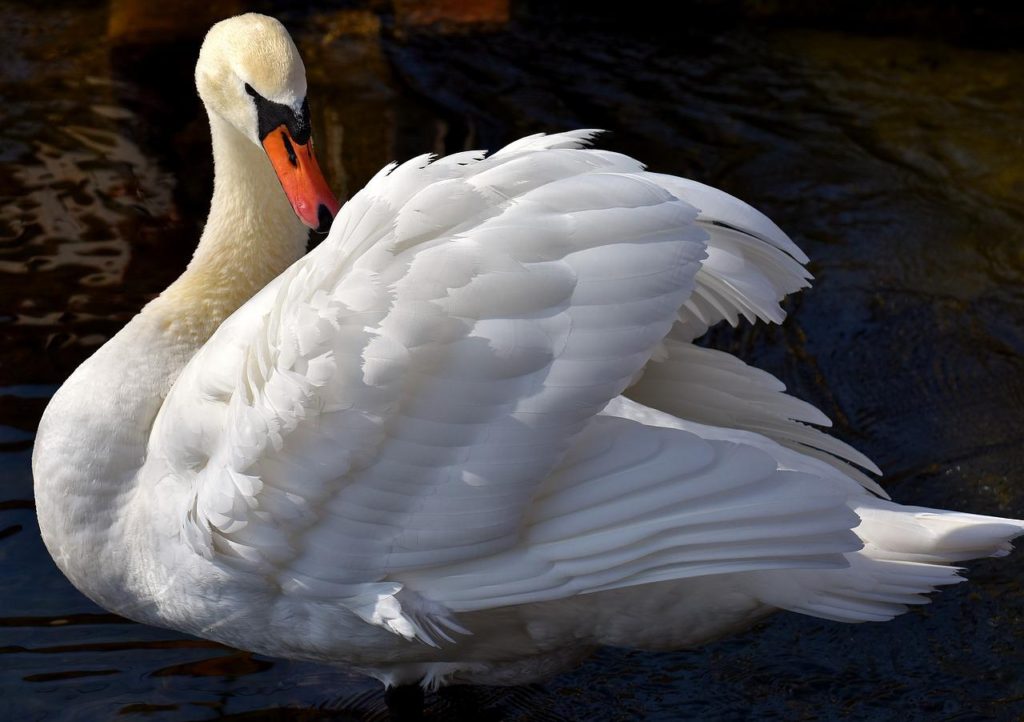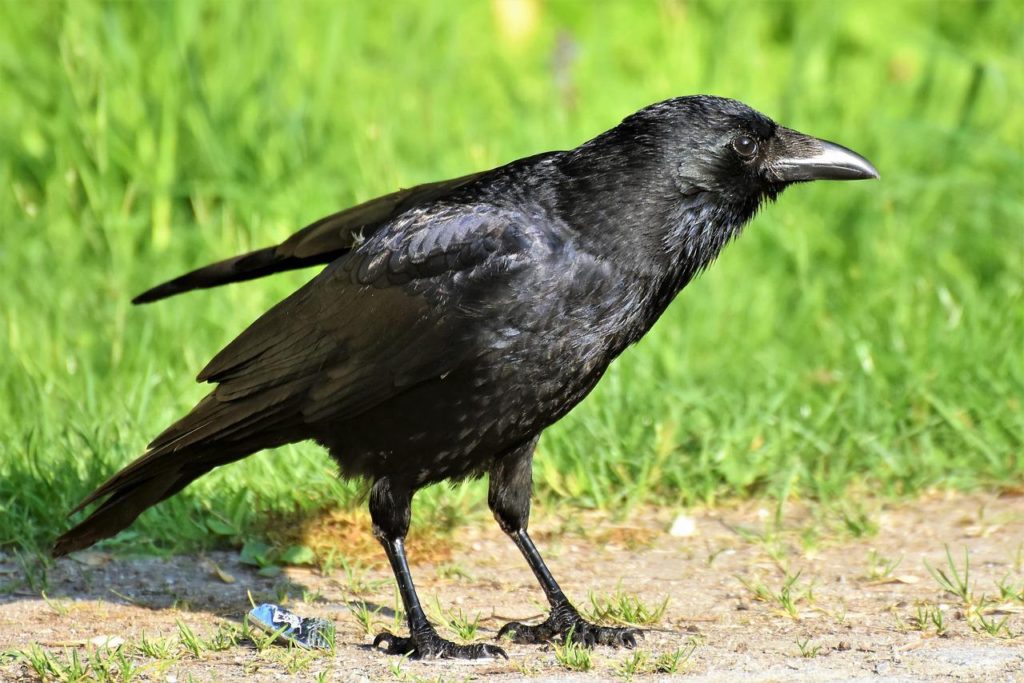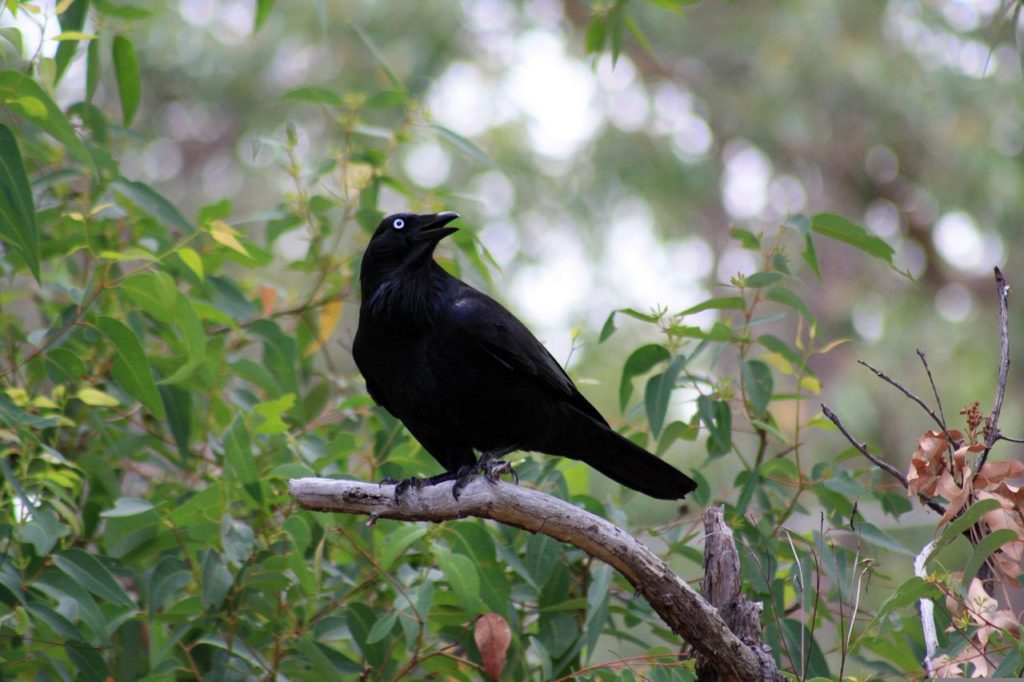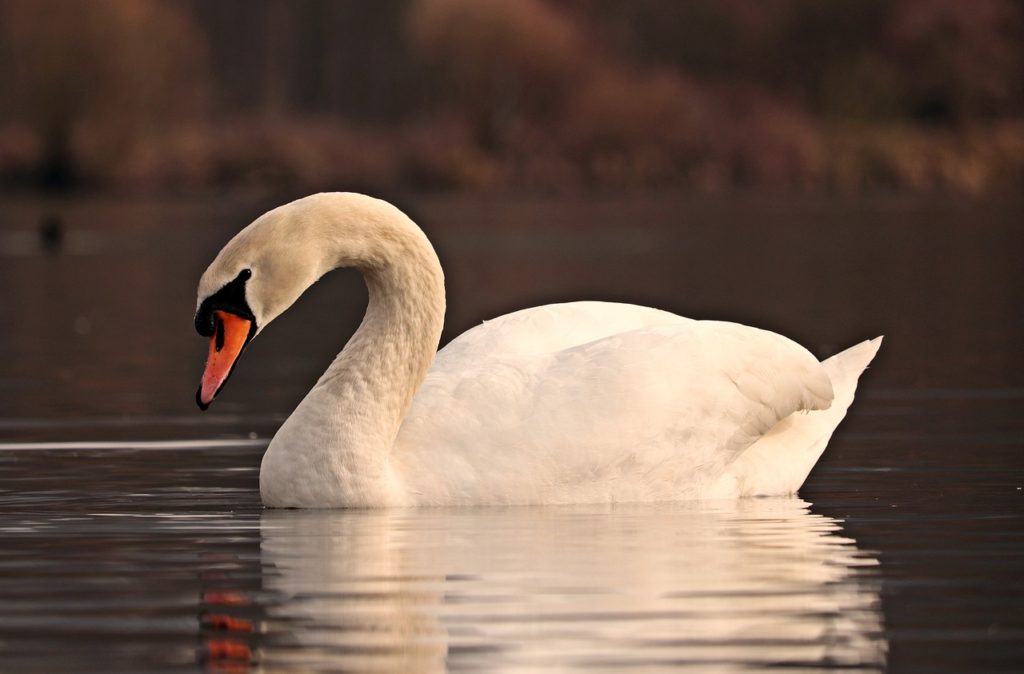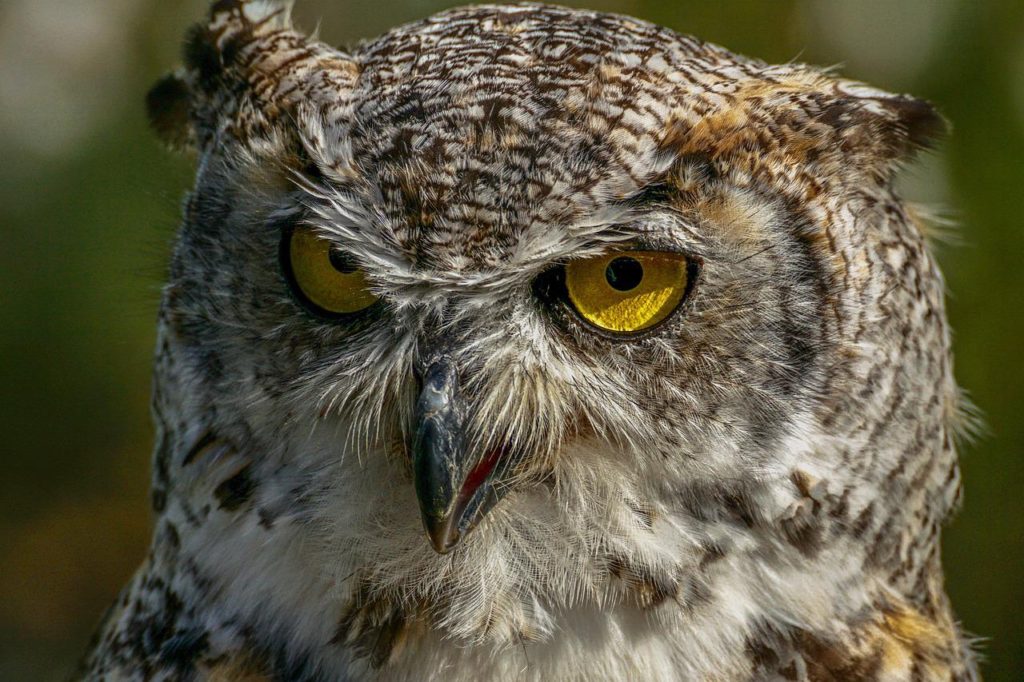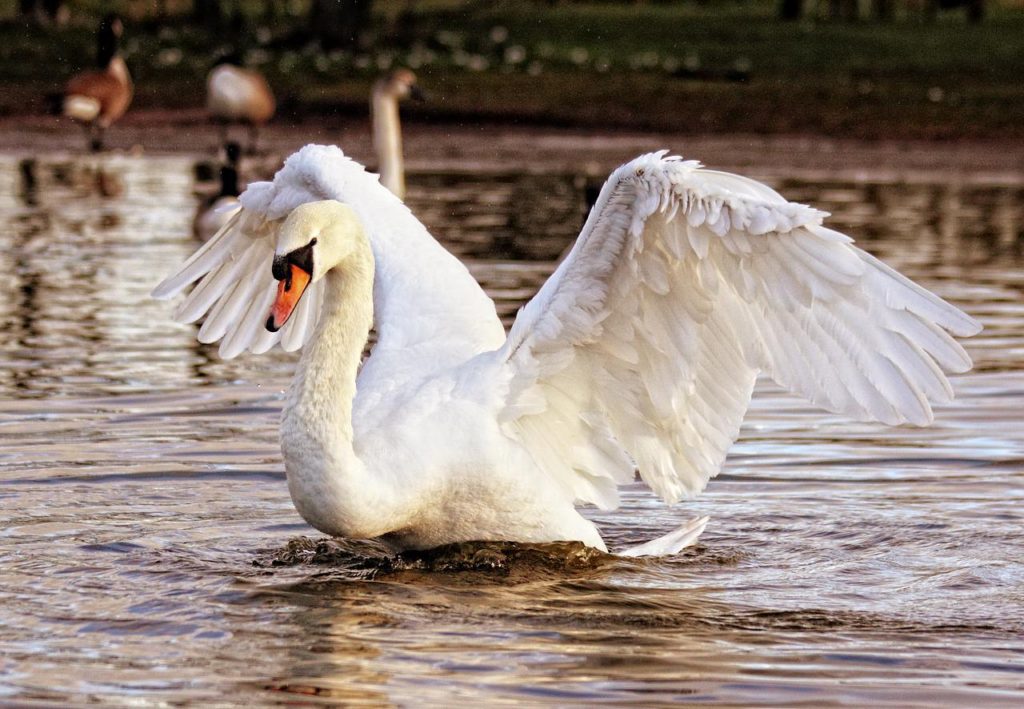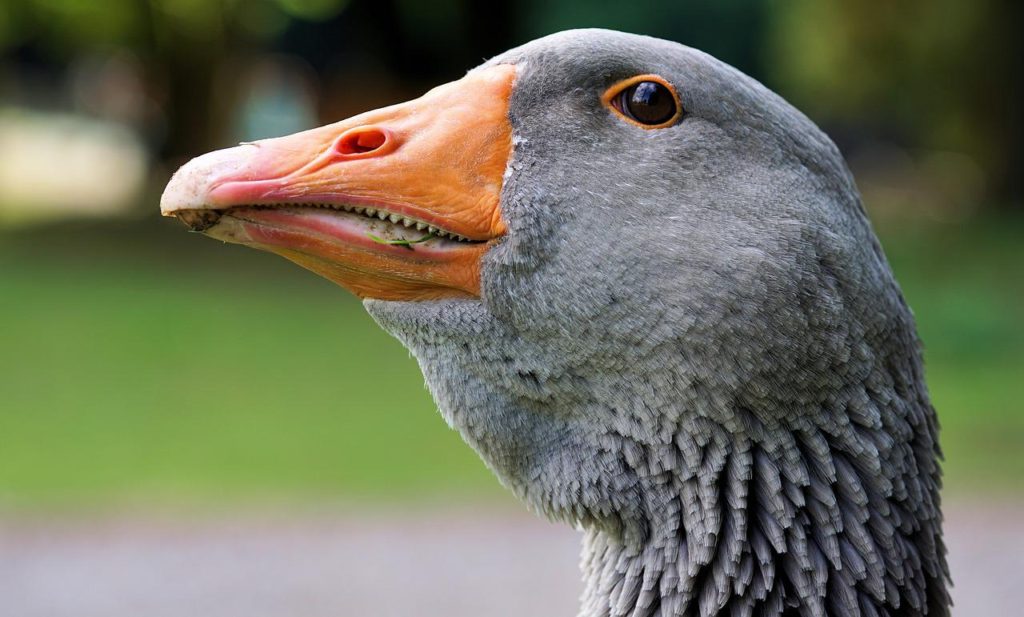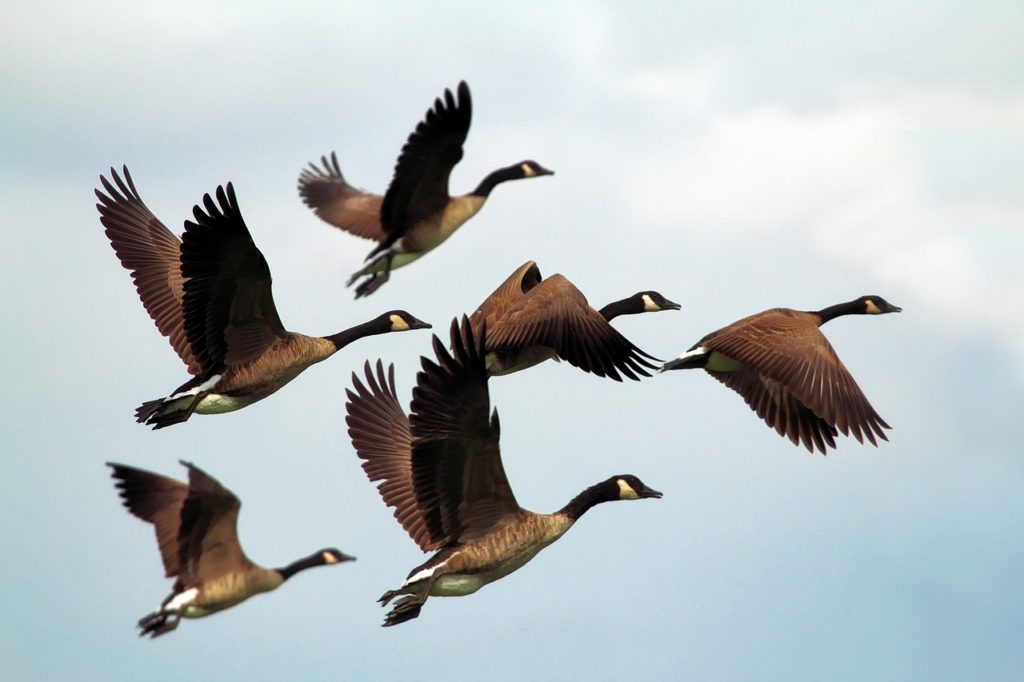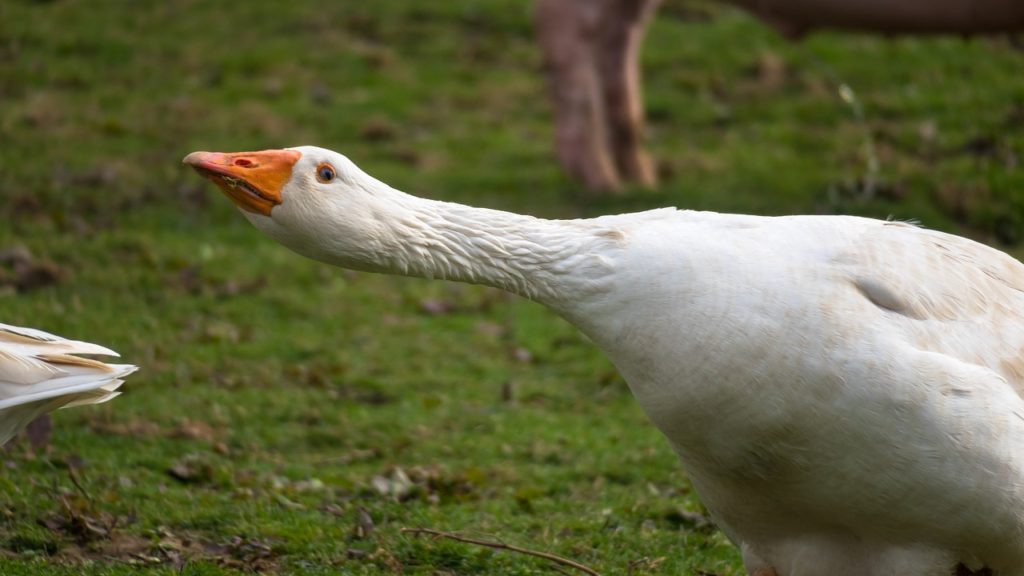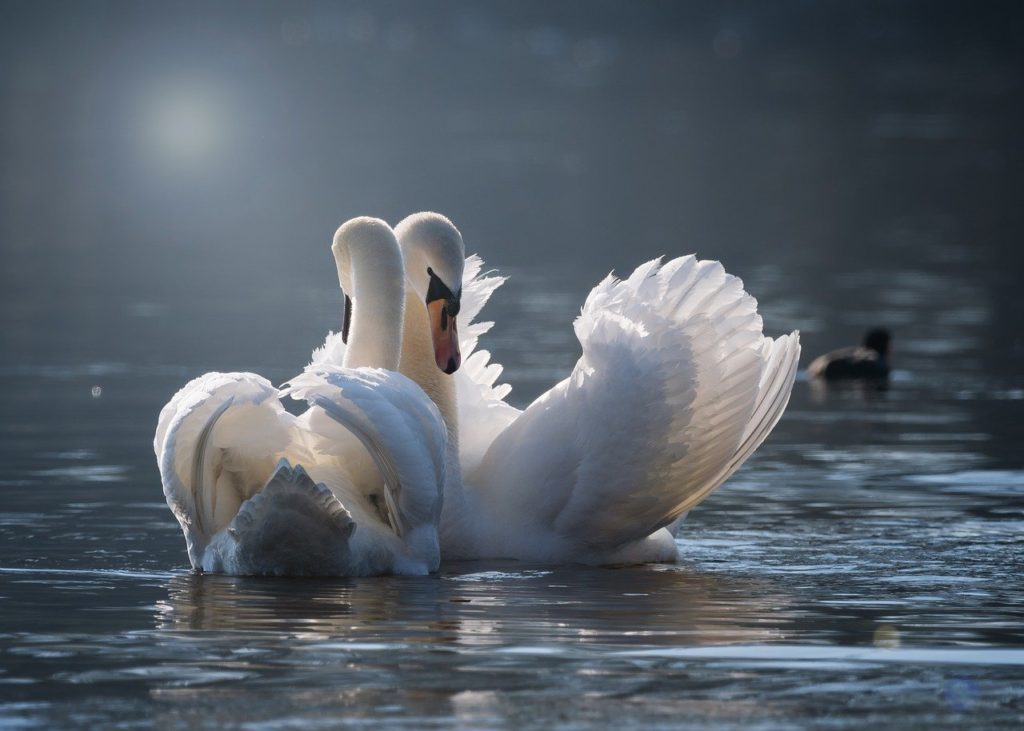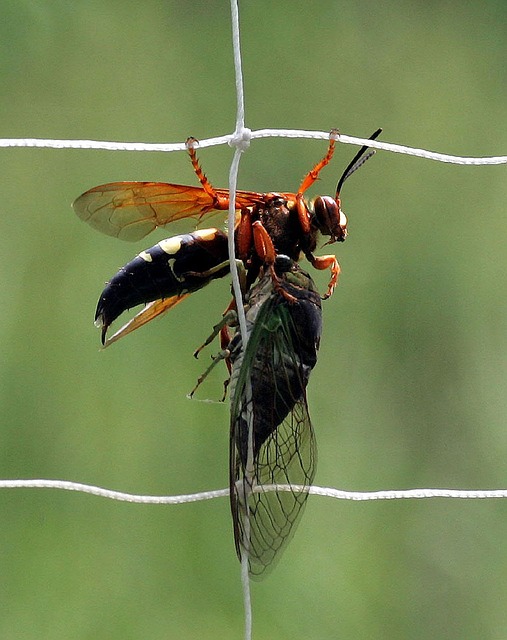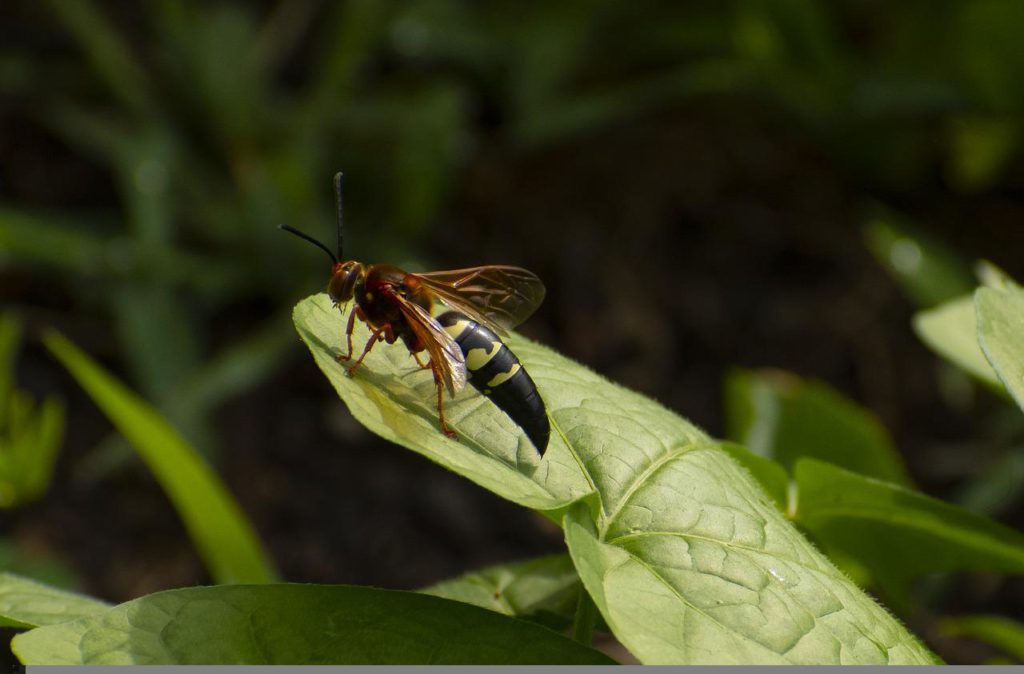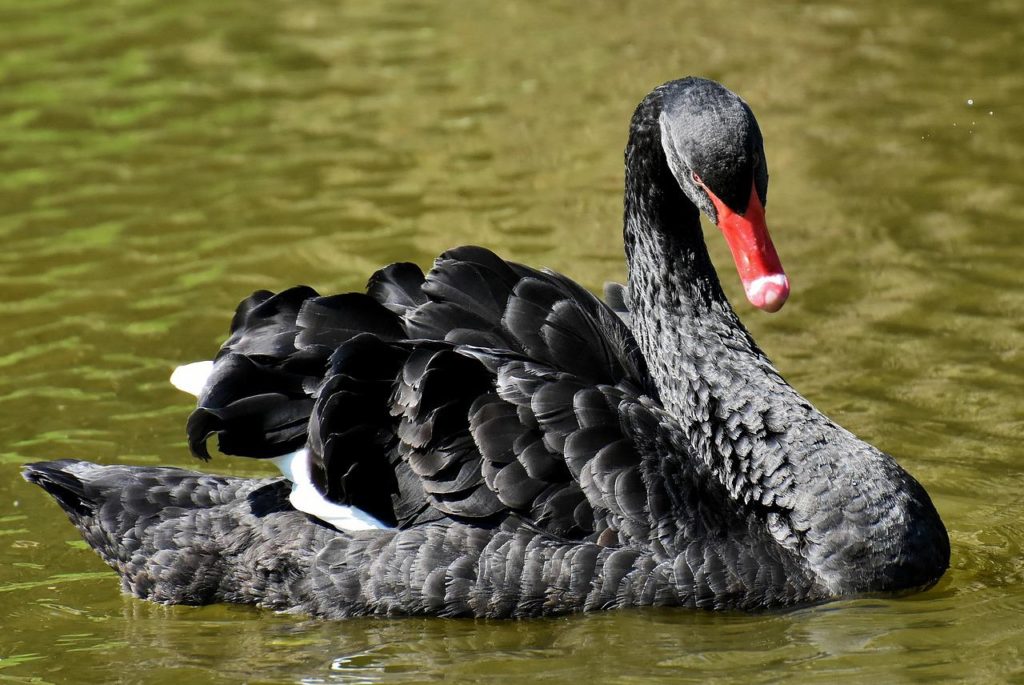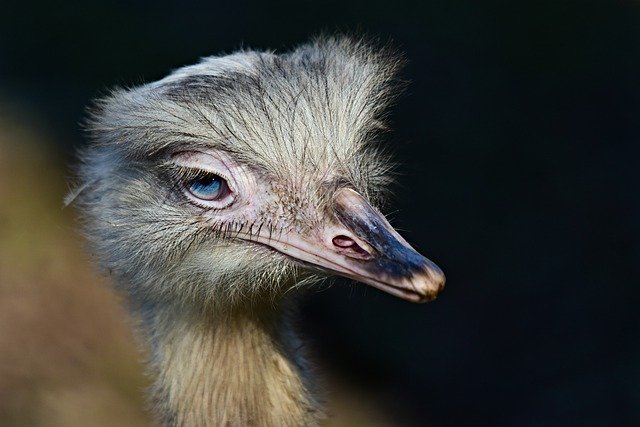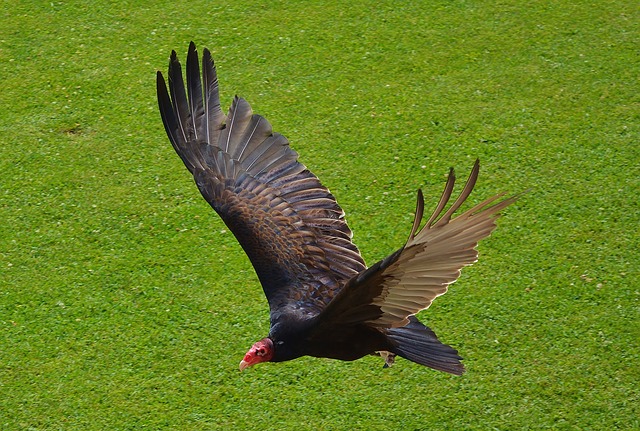
The turkey vulture is a widespread and distinct-looking bird of prey. And there are many more amazing things about this special species. So we’ve collected some of the best turkey vulture pictures to show you just how unique they are.
Turkey Vultures Sunning
To warm up their bodies turkey vultures will sun themselves. Typically this is done in the early morning. They will sit with their wings spread wide, which helps to increase the amount of surface area of their body that is coming into contact with the sun’s warm rays. This is known as the “horaltic pose”.
Turkey Vultures Eating A Dead Bird
Turkey vultures are scavengers that feed on rotting animal carcasses. This helps to not only keep the environment clean but also to stop the spread of harmful bacteria and diseases. They are sometimes seen by the side of the road eating roadkill or near bodies of water feeding on fish that have washed up on the shore.
However because they are quite shy birds, there aren’t many turkey vulture pictures that show them eating in the wild. Instead, most are taken in zoos, which is also where scientists have learned much of what they know about this species.
Juvenile Turkey Vulture With Adults
You can tell a young turkey vulture apart from older birds by its coloration. Juveniles have a gray head along with a dark-colored beak and feet. However, once they reach around fifteen months of age their head and feet will turn red and their beak will turn white. Because of their dark colors, young turkey vultures are often misidentified as black vultures.
Turkey Vulture Roost
Turkey vultures are year-round communal roosters. While they typically forage alone during the day, at night they roost in large numbers. This helps to protect them from predators. The vultures usually prefer to roost in large dead trees or manmade structures such as cell phone towers.
Turkey Vulture Head
Sometimes this species is called the Red-headed turkey vulture to help distinguish it from its close relatives the yellow-headed and the greater yellow-headed vulture. Its distinct red head looks quite similar to that of a turkey which is how it got its name.
Turkey Vulture In Flight
When seen from below a flying turkey vulture can be identified by its silvery-gray flight feathers which stand out against the dark wing lining and the black feathers of its body. Its head looks small in comparison to its body and the wings are held in a wide “V,” shape.
Large Turkey Vulture
Turkey vultures are an excellent example of Bergmann’s Rule. This states that the further north that some species live the larger in size they get, because of the colder climate. This is certainly true for the turkey vulture as birds that live in northern regions are bigger and heavier than those that live in warmer southern regions.
Pair Of Turkey Vultures
Both male and female turkey vultures are similar in size. This is unlike many other birds of prey, such as eagles, where the female is larger than the male. Both sexes also have the same colors and markings.
Turkey Vulture Circling
The wide-winged yet lightweight turkey vulture is built perfectly for soaring and circling on updrafts of warm air as they search for food. Their incredible sense of smell allows them to find animal carcasses that are not visible from above. They can actually detect the gases given off by decaying animals within the first twelve to twenty-four hours of death.
Turkey Vulture Beak
The turkey vulture’s beak is long and hooked to help it tear away flesh. It is white in color which contrasts with the dark color of its body. And because the beak is not divided by a septum, when looking at pictures of a turkey vulture which are taken from the side, instead of head-on, you can actually see directly through it.
Start Shopping for Birding Supplies!
What Do Crows Eat?
With roughly 40 different species, crows are a common sight in most places around the world. And while most of us are familiar with their appearance and harsh vocalizations, their diet is not as obvious. So what do crows eat? Here's what you'll want to know. What Do...
What Are Crows Good For?
Crows are widely considered to be pests. However, these large and highly intelligent black birds actually serve quite a few important functions in the environment. So what are crows good for? Here's what you'll want to know. Pest And Parasite Management Crows are...
How Long Do Swans Live?
Swans are graceful and beautiful creatures and as such, people have many questions about them. They want to know about their mating rituals, their diet, their preferred habitats, and even their lifespans. How long do swans live for anyway? Swan lifespans actually vary...
Are Crows Good Pets?
People all around the world see and hear crows on a daily basis. Although these intelligent and dark birds are practically ubiquitous, most people don't think of them as being household pets. Are crows good pets? The general consensus is that crows do not make...
Are There Crows In Australia?
Crows are remarkably smart birds that also happen to be extremely adaptable. They navigate unfamiliar circumstances via observation and interaction. Crows reside in locations all over the globe. While they do not live in certain parts of South America, they do reside...
What Do Swans Eat?
Swans are famously long-necked birds that are symbols of romance, love, beauty, and purity. Since these waterbirds have so many admirers, people often wonder about their eating habits, behaviors, and more. What do swans eat, anyway? Swan Basics Swans typically live in...
Birds That Look Like Owls
Owls are typically solitary and mainly nocturnal birds. And although these well-known hooting creatures have a rather distinctive physical appearance, there are actually various other kinds of birds that resemble owls closely. And people sometimes mix them up. So...
Why Are Swans Protected?
Swans are graceful and gorgeous creatures. They also happen to have protection in the United Kingdom, interestingly enough. Why are swans protected there, anyway? And does the Queen own all the swans? Yes, she actually owns any mute swans that are unclaimed in both...
Birds With Teeth
Birds do not have teeth. However, there are quite a few that really look like they do! These birds have evolved special beaks which help them to perform important functions. So here are some of the most amazing birds with “teeth,” and what you’ll want to know about...
Do Geese Fly?
Although geese are clearly birds, there are many individuals who do not necessarily associate them with flying. So, do geese fly? The honest answer is that these waterfowl do. They do not exactly slouch in the flying department, either. Many people are pleasantly...
Are Geese Dangerous?
Geese, in brief, are waterbirds that are quite substantial in size. Since they're often spotted on golf courses, at schools, and in community parks, people understandably tend to wonder whether they're safety threats. Are geese dangerous? Why Geese Attack...
Do Swans Mate For Life?
Swans are famously elegant waterbirds that are known for their sizable bodies, webbed feet, and lengthy necks. People often associate them with romantic imagery and monogamy. Do swans mate for life? You can find the response to that common and rather fascinating...
When Do Cicada Killers Come Out?
Whether you dread them each year or are waiting for them to emerge and control the cicada population you may be wondering, “When do cicada killers come out? The answer is they come out each summer in late June or July. Here’s what you’ll want to know. Cicada Killer...
Are Cicada Killers Dangerous?
One look at one of these huge wasps buzzing around, your yard, and it’s only natural to ask, “Are cicada killers dangerous?” Fortunately, these wasps are mild-mannered. But here’s what you’ll want to know. Cicada Killer Wasps Basics Cicada killers emerge from the...
What Are Black Swans?
What are black swans? Black swans (Cygnus atratus) are sizable waterbirds. This species primarily appears in Australia's southwestern and southeastern portions. The black swan is nomadic in its homeland. This bird, true to its name, is mostly black. Although the bird...
What Do Cicada Killers Eat When There Are No Cicadas?
What do cicada killers eat when there are no cicadas? Well, while cicada killer wasps do hunt cicadas, the adults don’t actually eat them or kill them, their young do. Read on to learn more! The Cicada Killer Diet While you may have seen cicada killer wasps flying...
Do Cicada Killer Wasps Sting?
As one of the biggest species of wasp in North America the cicada killer wasp can be intimidating. And because of their size, appearance, and scary-sounding name, many people wonder, “Do cicada killer wasps sting? The answer is yes and no, and here’s what you’ll want...
Emu Facts
Did you know? One emu egg can make an omelet that can feed up to six adults. Did you know that the emu is the only bird with calf muscles? Can an emu walk backward? Let us find out by exploring some of the most jaw-dropping emu facts. Emus Have Amazingly Powerful Legs...
Rhea Facts
Doting dads, did you know the male rhea builds the nest, incubates the eggs, and takes care of the young? The rheas are paragons of parental care. It’s a bird like no other, and you will be surprised by the following rhea facts. Rheas Are One Of The Best Dads In The...
